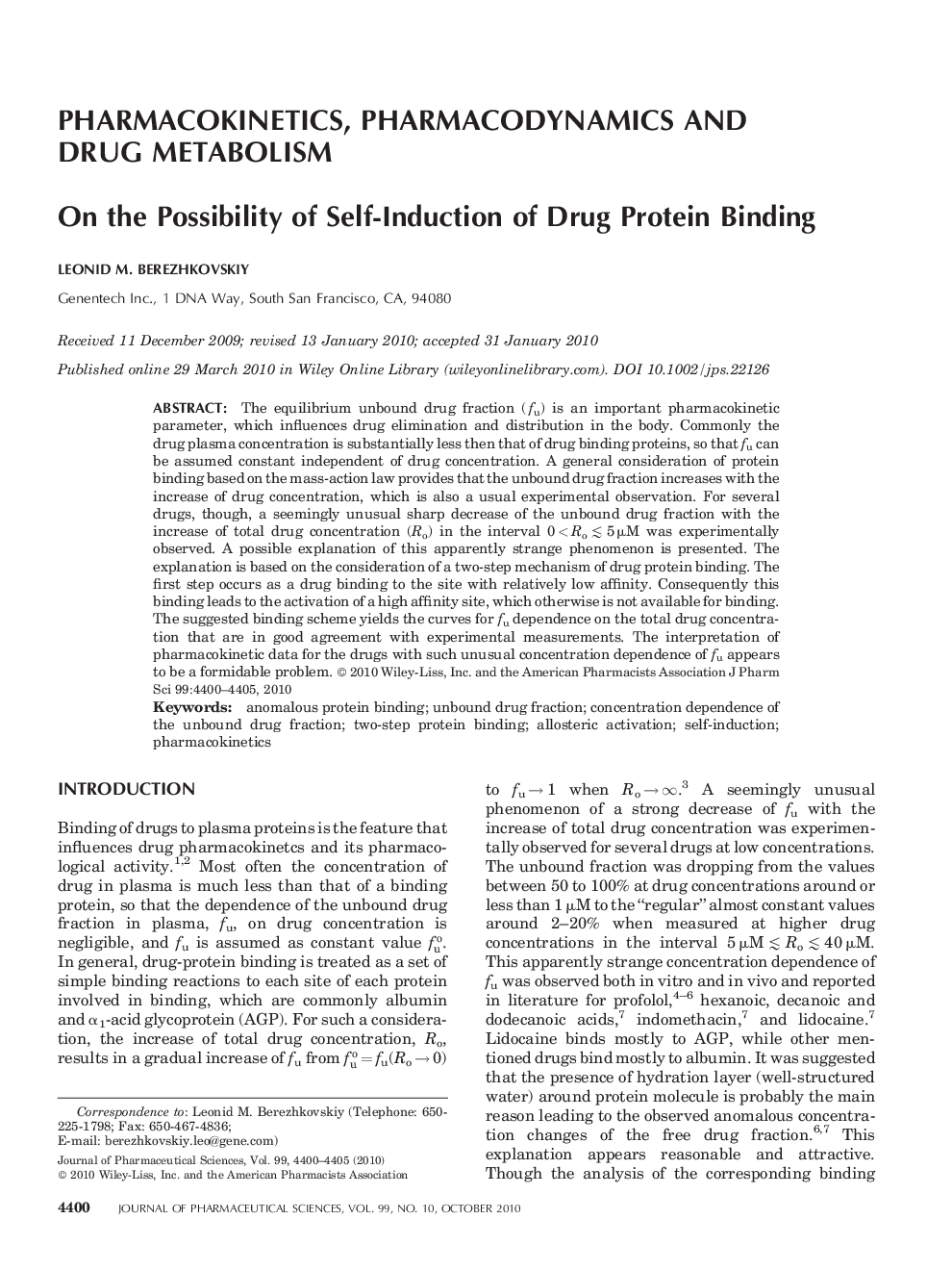| Article ID | Journal | Published Year | Pages | File Type |
|---|---|---|---|---|
| 2487078 | Journal of Pharmaceutical Sciences | 2010 | 6 Pages |
Abstract
The equilibrium unbound drug fraction (fu) is an important pharmacokinetic parameter, which influences drug elimination and distribution in the body. Commonly the drug plasma concentration is substantially less then that of drug binding proteins, so that fu can be assumed constant independent of drug concentration. A general consideration of protein binding based on the mass-action law provides that the unbound drug fraction increases with the increase of drug concentration, which is also a usual experimental observation. For several drugs, though, a seemingly unusual sharp decrease of the unbound drug fraction with the increase of total drug concentration (Ro) in the interval 0 < Ro < 5 μM was experimentally observed. A possible explanation of this apparently strange phenomenon is presented. The explanation is based on the consideration of a two-step mechanism of drug protein binding. The first step occurs as a drug binding to the site with relatively low affinity. Consequently this binding leads to the activation of a high affinity site, which otherwise is not available for binding. The suggested binding scheme yields the curves for fu dependence on the total drug concentration that are in good agreement with experimental measurements. The interpretation of pharmacokinetic data for the drugs with such unusual concentration dependence of fu appears to be a formidable problem. © 2010 Wiley-Liss, Inc. and the American Pharmacists Association J Pharm Sci 99:4400-4405, 2010.
Related Topics
Health Sciences
Pharmacology, Toxicology and Pharmaceutical Science
Drug Discovery
Authors
Leonid M. Berezhkovskiy,
